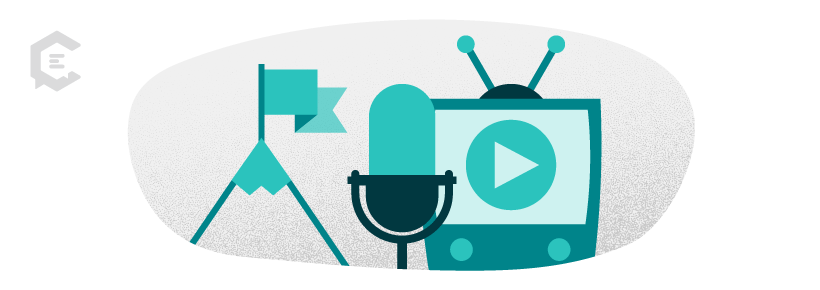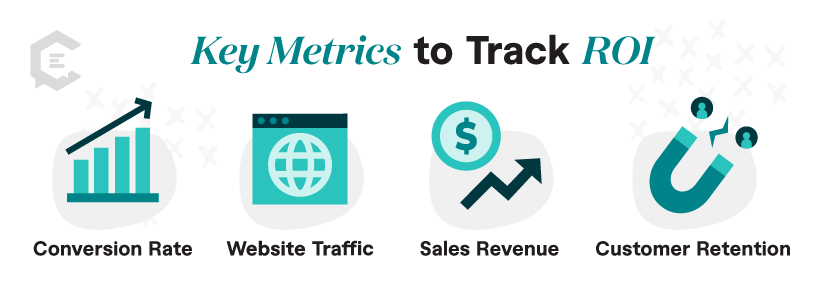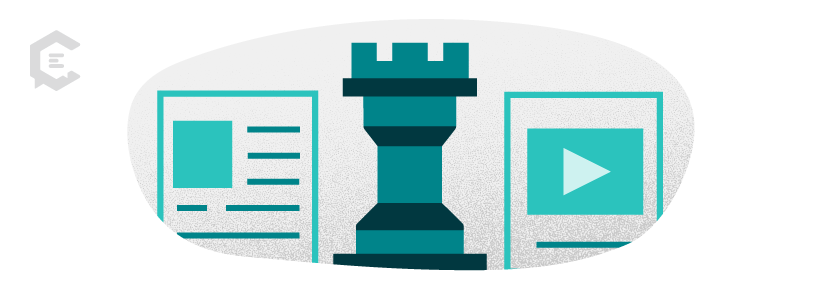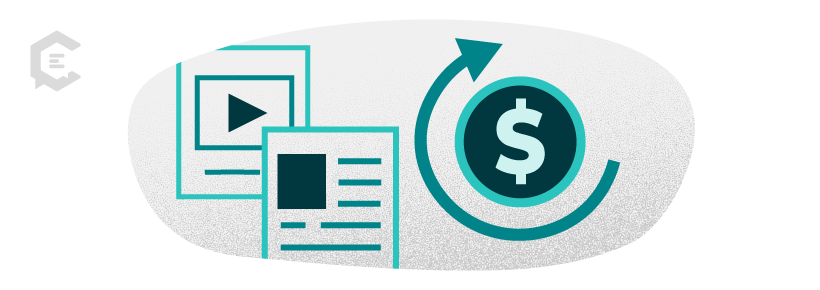Content marketing often yields a higher Return on Investment (ROI) than traditional advertising, especially as the marketing landscape shifts towards digital, customer-centric approaches.
Unlike traditional advertising methods focusing on product promotion, content marketing facilitates audience engagement by offering relevant, informative, and valuable content. The approach helps your business establish credibility and trust, leading to long-term value and engagement.
This guide will cover why content marketing delivers better ROI than traditional advertising and its potential to drive business growth.

The ROI Challenge in Traditional Advertising
While there are advantages to traditional advertising, it also comes with several limitations and cons.
Limitations and challenges
Traditional advertising includes the following challenges and limitations.
- Challenges in measuring the impact of traditional advertising. Unlike digital marketing, which offers extensive tracking capabilities, traditional advertising is limited in tracking various metrics. This limitation in traditional advertising hinders you from measuring how its performance impacts your ROI or overall business goals.
- Limited audience interaction. Traditional advertising typically involves one-way communication, leaving little room for audience interaction and engagement.
- Limited budget flexibility and high costs. Producing and running traditional ads is often expensive, whether through print, TV, or radio. The costs of creating, broadcasting, and distributing your ads can limit your campaign’s duration and frequency, affecting its overall impact.
Cost vs. benefit analysis
Comparing the benefits versus the costs of traditional advertising involves checking how much money you spend on creating and showing ads compared to the returns.
Costs can include:
- Ad production
- The fees and salaries of people working on the campaign
- Buying time or space on print, radio, or TV
When done right, traditional advertising can lead to more people recognizing your brand, your business reaching a wider audience, and more sales.
However, traditional advertising is often costly with minimal returns. It is crucial to assess if its potential ROI is worth your time, resources, and marketing investment.
Why Content Marketing Offers Better ROI
In a battle between content marketing and traditional advertising, content marketing is a better option in terms of ROI because of the following.

Long-term value and engagement
Content marketing offers better long-term value and engagement than traditional advertising because it focuses on customer relationship-building, adapting strategies to meet evolving customer needs, and providing valuable information.
It also helps your business with the following:
- Establishing authority. Consistently providing relevant, valuable content helps position your business as an industry authority. It fosters credibility and trust, encouraging long-term customer engagement and relationships and improving ROI.
- Ensuring continuous engagement via evergreen content. Content that remains relevant over time extends its value. It means that evergreen content can continue to attract and engage your audiences long after its initial publication, resulting in higher ROI.
Cost-effectiveness and scalability
Content marketing is more cost-effective and scalable than traditional advertising for several reasons.
- Lower production costs. Creating digital content, such as videos and blog posts, costs less than traditional advertising methods, such as TV commercials and print ads. You can produce digital content with fewer resources using cost-effective tools and methods.
- Scalability across digital platforms. Online marketing content is highly adaptable and scalable across multiple platforms. For instance, you can share and repurpose your video or blog post on your website and social media pages to reach wider audiences. It helps you maximize your initial investment and get better returns.
Measuring ROI in Content Marketing
Determining your content marketing efforts’ ROI requires tracking key metrics and using the right tools and techniques for accurate measurement.

Key metrics to track
Measure your ROI by tracking key metrics that reflect how your marketing content helps achieve your business goals.
Below are the top metrics worth tracking.
- Conversion rate. Tracking the percentage of visitors who act on conversion actions, such as subscribing to your newsletter or buying your product, lets you determine how well your content converts visitors into leads.
- Website traffic. Monitoring the overall traffic to your site, including page views and unique visitors, can tell you if your content attracts attention and drives engagement.
- Sales revenue. Tie your content to your sales revenue by analyzing how your content contributes to your sales funnel. Then, calculate the revenue generated from those content-driven conversions.
- Customer retention. Track customer loyalty, repeat purchases, and other retention metrics to determine your content’s impact on customer retention. It helps you identify the content that contributes to long-term customer relationships and better ROI.
Tools and techniques for measurement
The top tools and techniques to measure content marketing ROI include the following.
- Content marketing software. Modern content marketing platforms allow you to create, manage, and distribute content efficiently while measuring and tracking key metrics. For instance, WordPress lets you track user engagement, conversion metrics, and content performance.
- Marketing automation platforms. Marketing automation solutions like HubSpot include analytics features to track and measure lead generation, conversion rates, and user interactions. These can give you comprehensive insights into your content marketing efforts.
- Web analytics. Web analytics tools such as Google Analytics track and report website traffic, giving you valuable insights into user behavior and website performance (among others).

Strategies for Maximizing ROI Through Content Marketing
Achieve better ROI by optimizing your content marketing efforts with the following strategies.
Creating high-quality, relevant content
Top-quality and valuable content captures and retains your target audience’s attention, leading to engagement, conversions, and sales.
Relevant content can also drive more traffic to your website and boost its search engine visibility, amplifying its impact and potential returns.
Leveraging multiple channels and formats
Various content distribution channels and formats help your marketing content reach more people. It gives your business more opportunities to engage, connect with, and convert leads into customers.
Plus, using multiple content formats can appeal to various content consumption preferences. It can encourage audiences to engage with your content and become loyal customers.
Integrating Content Marketing into Your Overall Strategy
Aligning your content marketing campaign with your overall business strategy is crucial to getting meaningful results from your content marketing initiatives.
If launching a new product in a market served by competitors but not you, your content marketing should focus on gaining traction for this launch rather than heavily promoting existing products.
Aligning content with business goals
Aligning your content with your business goals doesn’t have to be complex.
Here’s a simplified yet proven and tested framework that content marketers use.
- Gain a clear grasp of your business objectives and the key metrics and KPIs to evaluate the success of your content marketing efforts in achieving these goals.
- Figure out which target audience you should target to meet your business goals.
- Uncover your target audience’s pain points and the future outcome they want to achieve.
- Research the online platform or environment where your audience stays and the type of content that generates the best result on each platform.
- Develop content that solves your audience’s challenges and guides them toward their desired outcomes, ensuring it’s optimized for the specific platform or channel.
- Publish and distribute your content pieces on various channels — especially to the digital spaces your audience frequents.
- Track, measure, and analyze the results you obtained from your published content.
- Continuously tweak and improve your content marketing initiatives based on your data analysis.
Following the framework above helps you create content that aligns with your business goals and allows you to design winning content marketing campaigns.
Best practices for implementation
Consider these quick tips to implement an effective content marketing strategy.
- Know your target audience’s needs, interests, preferences, and pain points to create content that resonates with them, convincing them to convert and buy.
- Prioritize creating high-quality, relevant content instead of quantity. Audiences are more likely to convert when you provide them with content that gives them value. Get help from reliable content writing services and solutions to streamline producing high-quality content.
- Optimize your content for organic search and search engines. Include relevant keywords to boost your content’s visibility and reach while driving more traffic and engagement.

Yield better ROI with content marketing
Prioritizing content marketing over traditional advertising gives you a better chance of yielding better ROI since the approach aligns with modern consumers’ needs.
Content marketing is a better approach to achieving higher returns with its long-term value, better engagement opportunities, measurability, cost-effectiveness, and scalability.
Speak with one of our expert content strategists to see how we can help you create amazing, high-converting content for you.



